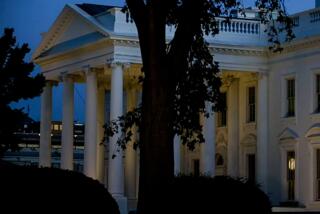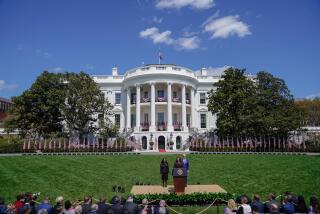Soviet ‘Spydust’ Called Harmless by U.S.
- Share via
MOSCOW — The U.S. Embassy said Friday that “spydust” allegedly used by the KGB to trace the movements of American diplomats has been proved harmless despite earlier fears that it might cause cancer.
“I am happy to report this substance is not as dangerous as it might have been,” Ambassador Arthur A. Hartman told reporters.
An embassy statement said that exposure to the “spydust” chemical known as NPPD, particularly at the very low levels found in Moscow, “does not carry with it any known health risk.” An extensive series of medical tests indicates that NPPD is not a mutagen in mammals’ cells and this, together with the low dose, provides assurance that it will not cause cancer, the statement said.
The tracking agent was found in the private cars of five U.S. diplomats, who were apparently targeted in a Soviet snooping campaign, the embassy said.
An earlier check on 20% of the estimated 500 Americans living in Moscow showed no trace of the chemical, the report said.
August Warning
Embassy officials aroused widespread concern here last August by making public the discovery of the chemical along with a warning that it might cause cancer if used in large amounts.
But Friday’s report said that laboratory studies confirmed that the chemical, a yellow-white powder called nitrophenylpentadiene or NPPD, posed no risk to health when tiny quantities were employed as tracking agents.
Even so, Hartman said, the use of any chemical substance to check American officials’ movements is unacceptable. A total of 436 samples were taken on a random basis from apartments, cars and offices of about 20% of the members of the American communities in Moscow and Leningrad.
“NPPD was not detected in any of these samples,” the embassy report said.
Hartman said that he ordered a second survey to cover a small group of embassy officials who appeared to be targeted by Soviet authorities for close scrutiny.
This check, conducted last month, showed that cars belonging to five of the American diplomats were “contaminated” with the chemical, he said.
‘Some Kind of Spray’
“We really had to dig to find it this time but it was there,” Hartman told reporters. “We believe most likely it was spread by some kind of spray inside a vehicle, probably where cars are parked overnight.”
In Washington, State Department spokesman Charles Redman said the Soviet embassy there was notified of the results of the U.S. investigation. He refused to discuss the Soviet response.
Redman insisted that U.S. officials had no regrets about making an issue of the dust last year before conducting the subsequent tests. “None whatsoever, absolutely none,” he said.
“Just because it turned out not to have caused cancer, because it appeared to have been used in small doses and was targeted only on some people, still does not lessen in any way our concern that this was done in the first place,” Redman said.
Hartman declined to identify the five Americans whose cars were found to be dusted in the Soviet Union, but he said they all “tend to have contacts with Soviet citizens.”
More to Read
Sign up for Essential California
The most important California stories and recommendations in your inbox every morning.
You may occasionally receive promotional content from the Los Angeles Times.












